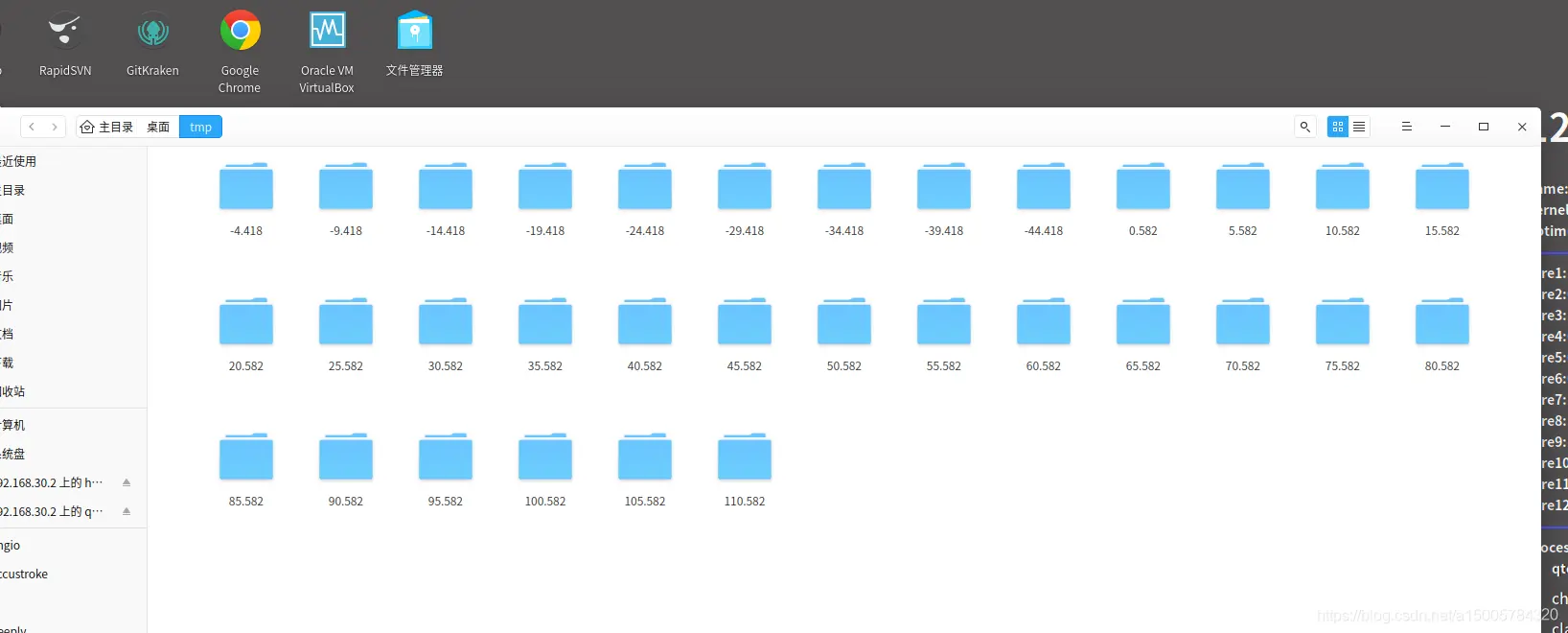dcm转vit¶
注意:自定义排序逻辑需要自己清楚,不同数据肯定不同。下边案例是根据实际高度分组,采样时间排序。(对应标签Slice Location、Acquisition Number)


1 背景&需求¶
- 背景
有时候设备上自动保存的dcm文件名顺序是乱序,需要根据dcm里标签来自定义决定顺序。Itk我看说明有按照字典排序读取,但是看了半天每搞明白,干脆自己写一下自定义排序。 - 需求
输入一组文件名乱序的dcm序列,根据标签分类和重命名。数据量不大,300m左右,并行转为vtk并写出。
2 利用itk遍历文件夹内所有dicom类型文件¶
dicom类型文件有各种后缀,而且原始数据大部分没有后缀。itk可以自动判断,那些是dcm文件。
/**
* @brief GetFileNames 利用寻找文件夹里所有dicom文件(跟后缀无关)
* @param dicom_file_path 输入路径(文件)
* @param file_names dicom_file_path同级文件所有dicom类型文件
* @return
*/
using FileNamesContainer = std::vector< std::string >;
bool GetFileNames(const QString &dicom_file_path,
FileNamesContainer &file_names) {
if (dicom_file_path.isEmpty()) {
return false;
}
QFileInfo file_info(dicom_file_path);
QString extension = file_info.path();
std::string series_identifier;
using NamesGeneratorType = itk::GDCMSeriesFileNames;
using SeriesIdContainer = std::vector< std::string >;
NamesGeneratorType::Pointer name_generator = NamesGeneratorType::New();
name_generator->SetUseSeriesDetails(true);
name_generator->SetDirectory(extension.toLocal8Bit().data());
const SeriesIdContainer &seriesUID = name_generator->GetSeriesUIDs();
auto seriesItr = seriesUID.begin();
auto seriesEnd = seriesUID.end();
while (seriesItr != seriesEnd) {
series_identifier = seriesItr->c_str();
file_names = name_generator->GetFileNames(series_identifier);
++seriesItr;
}
return true;
}
3 2利用ITK读取DICOM文件(⅔维)¶
读取单张dcm和序列dcm的函数。
/**
* @brief ReadDicoms/ReadDicom 读取文件(3维/2维)
*/
typedef signed short InputPixelType;
typedef itk::Image< InputPixelType, 2 > InputImageType;
typedef itk::Image< InputPixelType, 3 > InputImageTypes;
bool ReadDicoms(const FileNamesContainer &file_names,
InputImageTypes::Pointer &image) {
typedef itk::ImageSeriesReader<InputImageTypes> ReaderType;
using ImageIOType = itk::GDCMImageIO;
ReaderType::Pointer reader = ReaderType::New();
ImageIOType::Pointer dicomIO = ImageIOType::New();
reader->SetImageIO(dicomIO);
reader->SetFileNames(file_names);
try {
reader->Update();
} catch (itk::ExceptionObject &) {
return false;
}
image = reader->GetOutput();
return true;
}
bool ReadDicom(const std::string &file_name,
InputImageType::Pointer &image) {
typedef itk::ImageFileReader<InputImageType> ReaderType;
ReaderType::Pointer reader = ReaderType::New();
typedef itk::GDCMImageIO ImageIOType;
ImageIOType::Pointer gdcmImageIO = ImageIOType::New();
reader->SetFileName(file_name);
reader->SetImageIO( gdcmImageIO );
try {
reader->Update();
} catch (itk::ExceptionObject &) {
return false;
}
image = reader->GetOutput();
return true;
}
4 根据标签拷贝文件¶
这一步用我的没用,需要你清楚自己的排序规则。所有标签保存在key_list里
/**
* @brief CopyDicom 拷贝dicom到指定目录,根据Slice Location、Acquisition Number排序
* @param dicom_path
* @param list
* @param out_paths
* @return
*/
bool CopyDicom(const QString &dicom_path,
QStringList &list,
const QString &out_paths) {
// 读入dcm
FileNamesContainer file_names;
if (!GetFileNames(dicom_path, file_names)) {
return false;
}
std::vector<std::string>::iterator the_iterator;
for( the_iterator = file_names.begin(); the_iterator
!= file_names.end(); the_iterator++ ) {
// 记录tags
InputImageType::Pointer image = InputImageType::New();
ReadDicom(the_iterator->c_str(), image);
typedef itk::MetaDataDictionary DictionaryType;
using MetaDataStringType = itk::MetaDataObject<std::string>;
DictionaryType &dictionary = image->GetMetaDataDictionary();
QHash<QString, QString> key_list;
for (auto ite = dictionary.Begin(); ite != dictionary.End(); ++ite) {
QString id = QString::fromStdString(ite->first);
itk::MetaDataObjectBase::Pointer entry = ite->second;
MetaDataStringType::ConstPointer entry_value =
dynamic_cast<const MetaDataStringType *>(ite->second.GetPointer());
std::string key_string;
itk::GDCMImageIO::GetLabelFromTag(id.toStdString().c_str(), key_string);
QString key = QString::fromStdString(key_string);
QString value = QString::fromStdString(entry_value->GetMetaDataObjectValue());
itk::EncapsulateMetaData<std::string>(dictionary, key_string, "value" );
key_list.insert(key, value);
}
// 根据Slice Location分组,根据Acquisition Number重命名拷贝文件
QString out_path =
out_paths + QString::number(key_list.value("Slice Location").toDouble());
DirMake(out_path);
list << out_path;
out_path += "/" + key_list.value("Acquisition Number") + ".dcm";
QFile::copy(the_iterator->c_str(), out_path);
}
list = list.toSet().toList();// 剔除重复数据
return true;
}
5 itk数据转vtk并写出¶
/**
* @brief GenerateVti 把输入路径里所有dcm写出为vti
* @param path 输入dcm路径
*/
void GenerateVti(QString &path) {
vtkNew<vtkImageData> imagedata;
// 读入dcm
FileNamesContainer file_names;
InputImageTypes::Pointer input_image = InputImageTypes::New();
GetFileNames((path + "/1.dcm"), file_names);
ReadDicoms(file_names, input_image);
typedef itk::ImageToVTKImageFilter< InputImageTypes> itkTovtkFilterType;
itkTovtkFilterType::Pointer itkTovtkImageFilter = itkTovtkFilterType::New();
itkTovtkImageFilter->SetInput(input_image);
itkTovtkImageFilter->Update();
imagedata->DeepCopy(itkTovtkImageFilter->GetOutput());
// 写出vti
vtkNew<vtkXMLImageDataWriter> writer;
writer->SetInputData(imagedata);
writer->SetFileName((path + "/floor.vti").toLocal8Bit().data());
writer->Write();
}
6 路径相关设置函数¶
/**
* @brief GetFullPath 判读是否全局路径
* @param path
* @return
*/
QString GetFullPath(const QString &path) {
QFileInfo file_info(path);
return file_info.absoluteFilePath();
}
/**
* @brief DirMake 生成文件夹
* @param path
* @return
*/
bool DirMake(const QString &path) {
QString full_path = GetFullPath(path);
QDir dir(full_path);
if (dir.exists()) {
return true;
} else {
return dir.mkpath(full_path);
}
}
7 利用qt接口做并行处理¶
因为就是个测试工程,直接写在main里,所以必须阻塞调用(blockingMap)。正常使用写在线程里不用阻塞了就。
int main(int, char *[]) {
QString in_paths = "/home/yx/Downloads/CTP病例/IM000162";
QString out_paths = "/home/yx/Desktop/tmp/";
QTime time;
time.start();
QStringList list;// 目标路径
// 拷贝文件
CopyDicom(in_paths, list, out_paths);
// 并行写出vti (阻塞)
QtConcurrent::blockingMap(list, GenerateVti);
qDebug() << QString("%1").arg(time.elapsed() / 1000.0);
return 0;
}